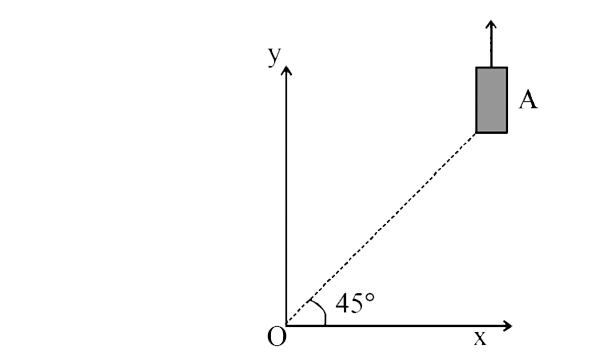The leaves which fall down very soon after their formation are
Deciduous
Caducous
Ramal
Cauline.
The correct Answer is:B
Step-by-Step Text Solution:
1. Understanding the Question: The question asks about the type of leaves that fall off very soon after their formation.
2. Identifying Leaf Types: There are different categories of leaves based on their duration on the plant:
- Evergreen Leaves: These leaves remain on the plant throughout all seasons and do not shed off.
- Deciduous Leaves: These leaves shed off at one time, typically in response to seasonal changes, and the plant may be leafless for a period.
- Caducous Leaves: These leaves fall off shortly after they are formed, usually as new buds develop.
- Rammel Leaves: These are leaves found on lateral branches and are not specifically related to the duration of leaf retention.
- Collyne Leaves: These leaves are found directly on the nodes of the stem and do not pertain to the shedding of leaves.
3. Analyzing the Options:
- Deciduous Leaves: Incorrect, as they shed all at once, not shortly after formation.
- Caducous Leaves: Correct, as they fall off soon after formation.
- Rammel Leaves: Incorrect, as they are not related to the shedding of leaves based on duration.
- Collyne Leaves: Incorrect, as they are not related to the shedding of leaves based on duration.
4. Conclusion: The correct answer to the question is Caducous Leaves, as they are the type of leaves that fall off very soon after their formation.
- Evergreen Leaves: These leaves remain on the plant throughout all seasons and do not shed off.
- Deciduous Leaves: These leaves shed off at one time, typically in response to seasonal changes, and the plant may be leafless for a period.
- Caducous Leaves: These leaves fall off shortly after they are formed, usually as new buds develop.
- Rammel Leaves: These are leaves found on lateral branches and are not specifically related to the duration of leaf retention.
- Collyne Leaves: These leaves are found directly on the nodes of the stem and do not pertain to the shedding of leaves.
- Deciduous Leaves: Incorrect, as they shed all at once, not shortly after formation.
- Caducous Leaves: Correct, as they fall off soon after formation.
- Rammel Leaves: Incorrect, as they are not related to the shedding of leaves based on duration.
- Collyne Leaves: Incorrect, as they are not related to the shedding of leaves based on duration.
Topper's Solved these Questions
- LEAFBOOK - DINESH PUBLICATION ENGLISHCHAPTER - LEAFEXERCISE - CYG
10 Videos
- KINGDOM PROTISTA (UNICELLULAR EUKARYOTES)BOOK - DINESH PUBLICATION ENGLISHCHAPTER - KINGDOM PROTISTA (UNICELLULAR EUKARYOTES)EXERCISE - CHECK YOUR GRASP
19 Videos
- LOCOMOTION AND MOVEMENTBOOK - DINESH PUBLICATION ENGLISHCHAPTER - LOCOMOTION AND MOVEMENTEXERCISE - CHECK YOUR GRASP
10 Videos
Similar Questions
A multicellular, filamentous alga exhibits a type of sexual life cycle in which the meiotic division occurs after the formation of zygote. The adult filament of this alga has
View SolutionA multicellular, filamentous alga exhibits a type of sexual life cycle in which the meiotic division occurs after the formation of zygote. The adult filament of this alga has
View Solution
Knowledge Check
Perennial plants which die soon after flowering and fruiting are known as :
AmonocarpicBcaudexCbiennialDdeliquescentA person slides freely down a frictionless inclined plane while his bag falls down vertically from the same height. The final speed of man (vm) and the bag (vB) should be such that
AvM<vBBvM=vBCvM>vBDthey depen on massesThe layer of the cell wall that is formed soon after the cell division and is composed of calcium pectate is
Amiddle lamellaBprimary cell wallCsecondary cell wallDcell coat
The leaves, flowers and fruits of the same tree not only have limited dimensions but also appear and fall periodically and some time repeatedly.
View SolutionTwo bodies begin to fall freely from the same height but the second falls T second after the first. The time (after which the first body begins to fall) when the distance between the bodies equals L is
View SolutionIn which of the following would you find retained endospermic tissue even after the formation of the seed ?
View SolutionOn a frictionless horizontal surface , assumed to be the x−y plane , a small trolley A is moving along a straight line parallel to the y−axis ( see figure) with a constant velocity of (√3−1)m/s . At a particular instant , when the line OA makes an angle of 45(∘) with the x− axis , a ball is thrown along the surface from the origin O. Its velocity makes an angle ϕ with the x− axis and it hits the trolley .
(a) The motion of the ball is observed from the frame of the trolley . Calculate the angle θ made by the velocity vector of the ball with the x−axis in this frame .
(b) Find the speed of the ball with respect to the surface , if ϕ=(4θ)/(3).

View SolutionA ball falls down vertically. Its motion is :
View Solution
